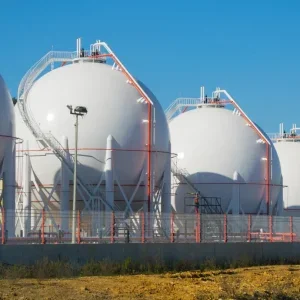
Americas Gold and Silver Corporation (TSX: USA) (NYSE American: USAS) (“Americas” or the “Company”), a growing North American precious metals producer is pleased to announce promising results from recent metallurgical testing at its Galena Complex in Idaho, confirming high recoveries of antimony alongside strong silver and copper recoveries from ore currently being processed.
Paul Andre Huet, Chairman and CEO, commented: “I am very excited that results of our test work have successfully demonstrated the potential to recover antimony – which is designated as a critical mineral in the United States – from ore currently being mined at our Galena Complex through a specialized flotation circuit. This breakthrough could significantly enhance value for Americas and its shareholders, as we currently receive no revenue, and were previously penalized for, the antimony in concentrates already produced. Furthermore, we‘re now well positioned as an early mover with the potential to become the only antimony producer in the United States, in the near-term.
Our technical team is moving forward with detailed technical and trade-off studies to develop a plan to rapidly capitalize on the opportunity to commercially recover and realize value for antimony already present in our concentrates.”
Historical Production & Untapped Value
Antimony at the Galena Complex is hosted in the common sulfosalt mineral, tetrahedrite, which is an antimony sulfide of silver, copper, iron and zinc. Although the Galena Complex has produced significant antimony over its life, the Company historically has not realized value for this material due to its insufficient concentration and quality for smelter acceptance.
Following a review of historical metallurgical data, the Company commissioned SGS Canada Inc. (“SGS”) to conduct flotation tests on current mill feed. There were two objectives to the testwork:
- Confirm that an antimony/silver flotation product could be achieved from the current ore being processed through the mill.
- Generate a sufficient volume of flotation concentrate for additional testing to separate the antimony from the concentrate.
Test Highlights:
- Antimony Recovery: ~90 – 96% from ore grading ~1% Antimony
- Silver Recovery: ~98 – 99% from ore grading ~50 opt Silver
- Rougher Concentrate Grades: ~18 – 19% Antimony and ~600 opt Silver
These test results on the tetrahedrite material indicate that a marketable concentrate may now be possible using modern metallurgical processes. The results from the test work are shown in Table 1 below.
Table 1: Galena Ore – Antimony Floatation Test Results
| Test 1 | Assays | Distribution (%) | ||||||||||
| Sb (%) | Ag (g/t) | Ag (opt) | Cu (%) | Pb (%) | Fe (%) | Sb1 | Ag | Cu | Pb | Fe | ||
| Rougher Concentrate | 19.3 | 20,355 | 593.4 | 24.47 | 0.53 | 17.5 | 92.3 | 98.7 | 98.3 | 83.2 | 4.5 | |
| Rougher Tail | 25 | 0.7 | 0.04 | 0.01 | 34.9 | 1.3 | 1.7 | 16.8 | 95.5 | |||
| Calculated Head Grade | 1,759 | 51.3 | 2.12 | 0.05 | 33.4 | 100 | 100 | 100 | 100 | |||
| Assay Head Grade | 1.2 | 1,790 | 52.2 | 2.1 | 0.05 | 34.2 | ||||||
| Test 2 | Assays | Distribution (%) | ||||||||||
| Sb (%) | Ag (g/t) | Ag (opt) | Cu (%) | Pb (%) | Fe (%) | Sb1 | Ag | Cu | Pb | Fe | ||
| Rougher Concentrate | 19 | 20,283 | 591.3 | 23.4 | 0.53 | 17 | 90.5 | 98.9 | 98.2 | 83.4 | 4.3 | |
| Rougher Tail | 22 | 0.6 | 0.04 | 0.01 | 35.6 | 1.1 | 1.8 | 16.6 | 95.7 | |||
| Calculated Head Grade | 1,762 | 51.4 | 2.05 | 0.05 | 34 | 100 | 100 | 100 | 100 | |||
| Assay Head Grade | 1.2 | 1,790 | 52.2 | 2.1 | 0.05 | 34.2 | ||||||
| Test 3 | Assays | Distribution (%) | ||||||||||
| Sb (%) | Ag (g/t) | Ag (opt) | Cu (%) | Pb (%) | Fe (%) | Sb1 | Ag | Cu | Pb | Fe | ||
| Rougher Concentrate | 17.9 | 21,132 | 616.1 | 24.4 | 0.57 | 17.9 | 93.4 | 98.7 | 97.8 | 84.2 | 4.5 | |
| Rougher Tail | 25 | 0.7 | 0.05 | 0.01 | 35.1 | 1.3 | 2.2 | 15.8 | 95.5 | |||
| Calculated Head Grade | 1,762 | 51.4 | 2.05 | 0.05 | 34 | 100 | 100 | 100 | 100 | |||
| Assay Head Grade | 1.2 | 1,790 | 52.2 | 2.1 | 0.05 | 34.2 | ||||||
| Test 4 | Assays | Distribution (%) | ||||||||||
| Sb (%) | Ag (g/t) | Ag (opt) | Cu (%) | Pb (%) | Fe (%) | Sb1 | Ag | Cu | Pb | Fe | ||
| Rougher Concentrate | 18.1 | 19,836 | 578.3 | 22.5 | 0.5 | 18.5 | 96.2 | 98.3 | 98.3 | 83.5 | 5.1 | |
| Rougher Tail | 34 | 1 | 0.04 | 0.01 | 34.6 | 1.7 | 1.7 | 16.5 | 94.9 | |||
| Calculated Head Grade | 1,844 | 53.7 | 2.09 | 0.06 | 33.1 | 100 | 100 | 100 | 100 | |||
| Assay Head Grade | 1.2 | 1,790 | 52.2 | 2.1 | 0.05 | 34.2 | ||||||
| Note: 1) The antimony (Sb) distribution calculation uses the assay head grade to determine distribution. | ||||||||||||
The test results mark a key step toward establishing Americas Gold and Silver as the only current antimony producer in the United States, unlocking a new revenue stream from a strategic by-product, previously counted as a penalty element, of the Galena ore body.
Background: Antimony as a Strategic Critical Mineral
Antimony is recognized by the U.S. government as one of 35 elements on the Department of the Interior’s Critical Minerals List due to its use in national defense, energy storage, and semiconductor applications. Currently, more than 90% of the antimony consumed in the United States is imported, primarily from China, Russia, and Tajikistan. At present, there are no operating mines producing antimony in the United States.
Over 18 million pounds of antimony have been produced from the Galena Complex since 2001. Americas Gold and Silver is positioned to become the only antimony producer in the U.S. if the potential for commercial recovery and product refinement can be achieved. This milestone would represent a significant development in restoring domestic supply of a mineral deemed essential to U.S. national and economic security, particularly since China stopped selling antimony to the U.S. in September 2024.
Antimony is on the U.S. Department of the Interior’s Critical Minerals List due to its strategic applications in:
- Defense: alloys in ammunition and armor
- Energy: grid-scale battery storage
- Semiconductors: flame retardants and high-tech applications
Current U.S. Antimony Supply Landscape:
- Zero operating primary antimony mines
- >90% imported (mainly from China, Russia, and Tajikistan)
- No meaningful domestic production
Global Antimony Supply (Estimated % of World Production 2024):
| Country | Share of Global Production |
| China | ~55–60% |
| Russia | ~20% |
| Tajikistan | ~10% |
| Others | ~10–15% |
Sources: USGS, Roskill, CRU Group
With no active domestic production, the U.S. is entirely dependent on foreign sources—a strategic vulnerability that Americas Gold and Silver may be uniquely positioned to help address.
Galena’s Legacy and Opportunity
Since 2001, the Galena Complex has produced over 18 million pounds of antimony, making it the largest antimony-producing site in the U.S. over the past two decades. However, until now, no revenue was recognized from this output due to limitations in concentrate quality.
Recent testing suggests that modern processes can now:
- Upgrade the antimony concentrate
- Create a marketable product
- Generate new value from existing operations
Next Steps
Historically, individual lots of ore from both the Galena and Coeur mines were processed at the Sunshine Mine—located just four miles west—where antimony was effectively separated and recovered. Building on this precedent, the next phase of metallurgical testing, under the direction of Allihies Engineering, Inc., will focus on treating the current concentrate to produce multiple saleable antimony products, opening the door to monetizing a long-overlooked byproduct and reinforcing the Company’s strategic value within the U.S. critical minerals framework.






